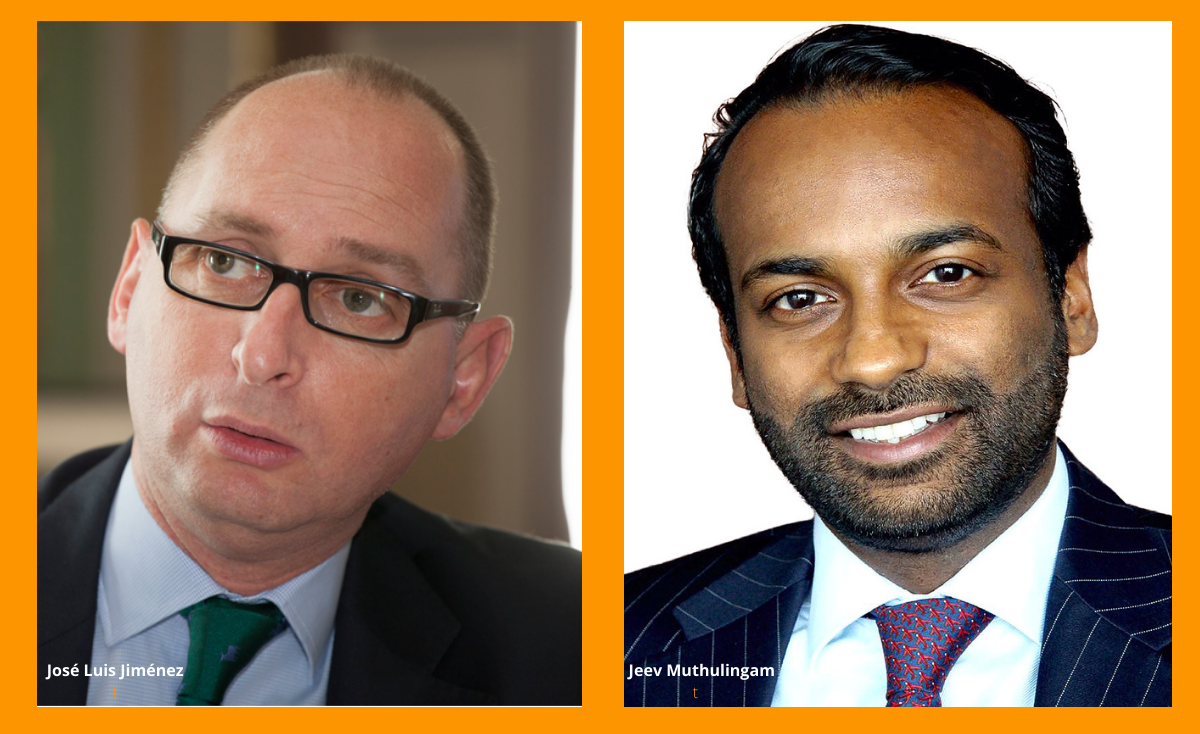
José Luis Jiménez: The first one is probably the negative interest rates environment. From an investment point of view, our most traditional asset class in an insurance portfolio, obviously, is dying.
Most central banks think that the only way to support the recovery is by maintaining this quantitative easing, plus low interest rates - we tend to disagree.
We are just postponing what will end up being the end solution. And the more time that we postpone doing the right thing, the bigger the risks we will have to face in the long run.
Trying to come back to a more normal scenario is key. I am not saying that central banks should raise interest rates a lot, but at least they should prevent negative interest rates.
"The more time that we postpone doing the right thing, the bigger the risks we will have to face in the long run."
In this new world, there are two kinds of people; those who save, and those who ask for money and have to borrow from different institutions. In the current environment, some savers are obviously dying as well. It’s almost crazy to hold savings.
And for most of the population - especially in Europe, where we have an already old population becoming even older and living longer – those people who rely on savings, the income seekers, are in a really bad situation.
The current environment forces people to ask for loans to live happily, to buy a new house, to travel, and do whatever they want - because money is so cheap. Sooner or later, we will have to sort it out. So, that’s one issue.
"Alternatives are a big part of each investor portfolio, especially for
insurers, and this could cause problems."
The other issue is the rise of alternatives as an asset class – maybe, because we do not have bonds that pay a decent income. That means we must switch our portfolios and move people into more exotic asset classes.
Alternatives are a big part of each investor portfolio, especially for insurers, and this could cause problems. I’m not saying that we have a bubble, but something very close to one.
Even 10 years ago, very few people were doing alternatives and now everybody does it, even private banking entities. And many are trying to take their first steps into this new asset class, whether that’s real estate, private debt, private equity or renewable energy. Of course, some of these are fine, but this is not the solution to all current problems.
The other missed asset class is public equity. Looking at the past 10 years, we find fewer listed companies than before. But why? Well, company listings are now heading to the private market.
"The other missed asset class is public equity."
This provides companies with all the freedom to act as they wish, with less oversight from supervisory bodies, better margin, and so on. Is this good for the market? I don’t think so. But that’s the trend.
When you take into account all the above, I am not scared, but I am a little bit worried and a little bit concerned.
Jeev Muthulingam: There are two reasons insurers access private debt.
Firstly, it provides diversification from predominantly domestic corporate bonds which are relatively small in terms of exposure to names and sectors. Secondly the significant risk-adjusted spreads.
There is an important role for insurers to provide access to investment solutions, which policyholders cannot directly access themselves.
Insurance product design to capitalise on this market access is important to successfully attract policyholders out of cash or short-dated, fixed-term bank deposits into savings solutions. It is also critical to mitigate exposure to negative rates.
"Whilst spreads have generally compressed across all sectors, these have been
differentiated across domestic and cross-currency markets."
In practice, this means insurers taking measured duration, credit risks, leveraging on their balance sheet flexibility as well as sometimes benefitting from the relative regulatory advantages that Solvency II offers.
Whilst spreads have generally compressed across all sectors, these have been differentiated across domestic and cross-currency markets.
When considering capital and ESG-adjusted metrics, there are still pockets of opportunities in “less travelled areas” both within the corporate bond space, such as within emerging markets or within alternative credit such as global trade finance.
In both examples, functional liquidity and credit quality are not necessarily compromised, when stepping out of core domestic fixed income, in fact this is attractive given scope for diversification.
"The yield environment, particularly negative interest rates, has prompted
insurers to adapt their investment strategies."
Generally, across Europe insurance investors have often been focusing on relatively narrow segments of the private debt universe.
I agree with José that the yield environment and as rightly pointed out, particularly negative interest rates, has prompted insurers to adapt their investment strategies over time, especially when starting with a relatively domestic, core fixed income allocation.
For shorter duration, non-life insurers, there is a natural ability to refresh the asset allocation faster than in a life book. In addition to longer duration, the in-force businesses could be more heavily constrained from both book value accounting and management of unrealised gains standpoints.
Going forward, in rising inflation or rates environments, it will be more challenging for non-life entities with shorter-term trading-oriented strategies and a reliance on the investment P&L.
"The combination of actuarial and investment expertise is essential to
achieve the best outcomes."
This is going to inflict greater pressure to sell into falling markets as a result of liquidity, leverage, regulatory and other considerations. A robust asset-liability management (ALM) framework can mitigate this.
For life insurers being largely buy-and-maintain, income-oriented investors, the risks are generally lower, again as long as the ALM is done well.
In both cases, the combination of actuarial and investment expertise is essential to achieve the best outcomes.